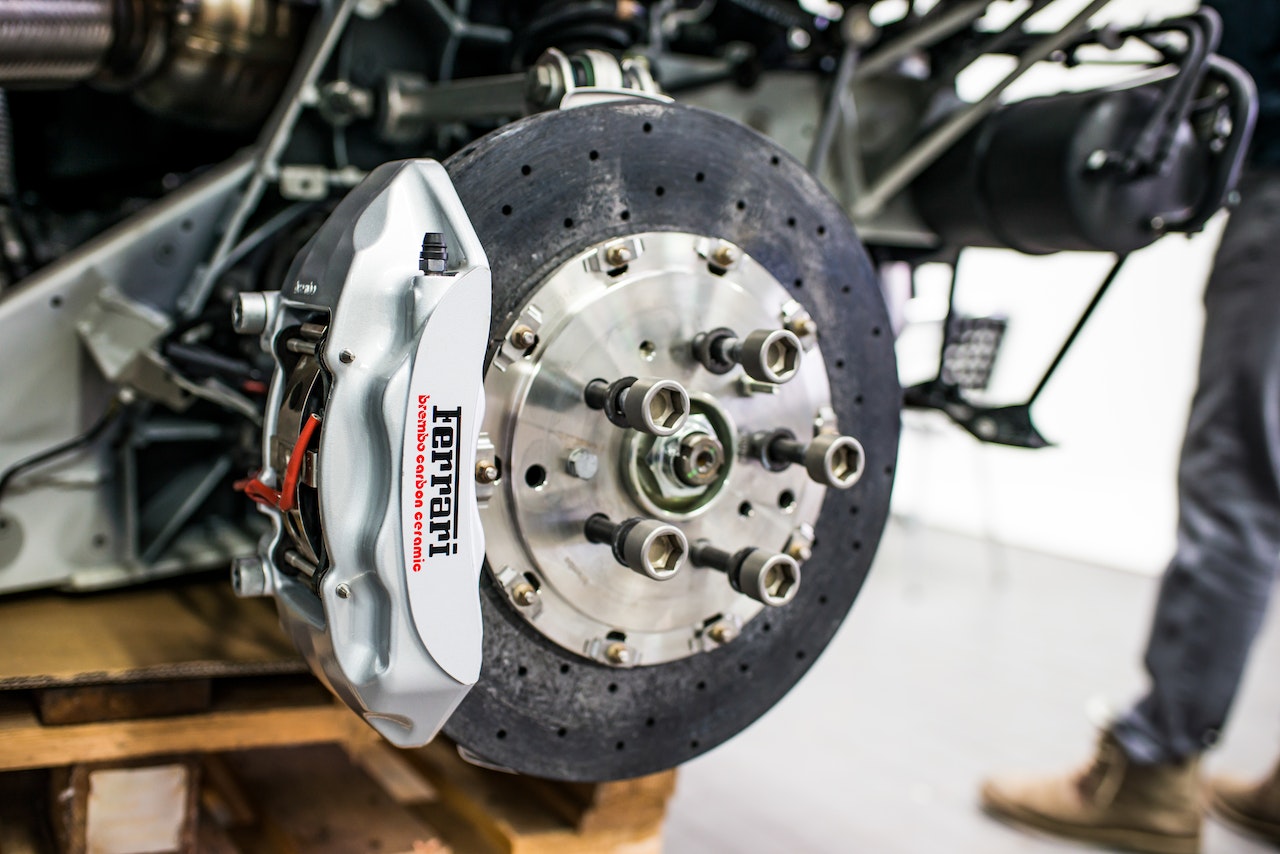
Taking good care of your car means giving it regular check-ups, and one vital part of this upkeep is changing the brakes from time to time. If you’ve recently installed shiny new brakes, you might have noticed a strange smell and maybe even seen a bit of smoke.
So, do those fresh brakes give off a smell and smoke? Well, it’s perfectly normal for brand-new brakes to have a distinct aroma and even release a bit of smoke. This is something known as “polymerization.” Essentially, it’s like a breaking-in process for your new brakes. The gases that come out during this process create smoke and smell.
Now that you understand it’s nothing to worry about if your new brakes do this, let’s dig deeper into why brakes might have this behavior.
After Changing the Brakes, Is It Normal to Smell Like Something Is Burning?
If you have recently replaced your brakes and noticed a burning odor, you might become concerned if you are unaware that this is a natural and expected part of breaking in new brakes. When you apply the brakes, whether you do it yourself or have a mechanic do it, you may smell something burning and see some smoke. The process in question is known as polymerization, as was just described.
Polymerization: what exactly is it?
The polymerization process is complex, yet its meaning may be summarized in simple words. The initial few times you apply pressure to the brake pedal will kick off a process known as “curing.” This occurs when the brake pads rub against the rotors as they rotate. This results in friction, producing a great deal of heat. The curing process begins once the brake pads make contact with the rotors.
The curing process results in the formation of gases, which provide the odor and smoke you are most likely observing through your rearview mirror. You may be perplexed why the manufacturers don’t merely cure the brakes before installing them to eliminate the odor and smoke.
Brake Pad “Scorching”
Some mechanics initiate the curing process before making brake pads available for purchase. In this case, the manufacturer employs a method called “scorching.”
What is Scorching?
To establish a friction layer on the initial one to two millimeters of the brake pad, intense heat, and pressure are applied briefly. When manufacturers do this, you’ll need less time to break in your new pads.
Why Not All Manufacturers Scorche?
Not all manufacturers scorch their brakes initially. This is because it’s most effective for the brake pads to be broken in by the actual rotors on the intended vehicle.
Benefits of Breaking In Brakes
Breaking in brakes through the bedding-in process offers several advantages:
- Enhances brake pedal responsiveness.
- Reduces noise and dust generated by the braking system.
- Prolong the lifespan of both your brake pads and rotors.
The Bedding-In Process
Bedding in, or burnishing, is used to age your brakes. It essentially involves applying more pressure to the brake pedal. Let’s go over the steps involved in this procedure.
Putting the Brakes on Bed
As discussed earlier, some manufacturers pre-treat brake pads before installing them in a vehicle, eliminating the need for bedding-in. However, in most cases, you’ll need to go through a bedding-in or break-in process.
Benefits of Bedding In Brakes:
- Removes the substance causing friction in the brakes.
- Transfers a consistent and even material layer from the brake pad to the rotor (the transfer layer).
- It makes the rotor surface smoother and more even.
Manufacturer-Specific Bedding-In Process:
Different brake pads have unique bedding-in procedures specified by the manufacturer. The manufacturer provides these instructions and should be followed with precision to ensure an even transfer layer.
Issues from the Uneven Transfer Layer:
Failure to achieve an even transfer layer can lead to:
- Tremors felt in the brake pedal or steering wheel.
- Reduced brake effectiveness.
- Difficulty while driving.
Step-by-Step Bedding-In Process:
- Accelerate to 60 MPH and apply the brakes several times to bring them to operating temperature.
- Gradually slow down from 60 to 10 MPH with significant brake pressure. Avoid engaging the ABS or wheel lock mechanism.
- Repeat this cycle 8-10 times without stopping to prevent excessive brake pad material on the rotors.
- After the final cycle, drive with minimal brake pressure to allow them to cool.
Checking the Results:
Successful bedding-in produces a light gray film with a slight blue tint on the rotor surface. This indicates that the braking material has been appropriately transferred.
Second Bed-In Cycle (if needed):
If you’ve installed new brake pads while keeping the old rotors, consider a second bed-in cycle after allowing the brakes to cool.
Other Factors Contributing to New Brake Odor and Smoke
There are a few more things to consider that might be causing the smell or smoke from your new brakes. Let’s take a look at each potential factor:
- Rust Inhibitor on New Rotors:
- New rotors often come with a rust inhibitor coating from the manufacturer. This coating will burn off after the first few brake applications, potentially causing smoke and odor.
To avoid this, wash the new rotors with dish soap and water before installation or use brake cleaner to remove the coating.
- Stuck Caliper:
- This issue typically occurs in older brake systems. The caliper applies pressure to the rotor, creating friction and slowing the wheel’s rotation. If a caliper gets stuck due to rust or dirt, it can lead to overheating and smoking the brake pad.
Signs of a stuck caliper include uneven wear on the brake pads and the pad not returning to its original position after being removed from the rotor.
- Heavy Brake Usage:
- Using your brakes extensively, especially on steep slopes, can generate a burnt smell. The increased friction during prolonged braking can result in smoke.
To prevent damage, try to cool down your brakes by driving or coasting without applying the brakes for at least five minutes.
Final Consideration:
Your vehicle’s braking system is crucial for safety. If none of the above reasons seem to be causing the smell and smoke from your new brakes, it’s advisable to have them inspected promptly. Investing a small amount for ensured safety on the road is undoubtedly the wisest choice.

